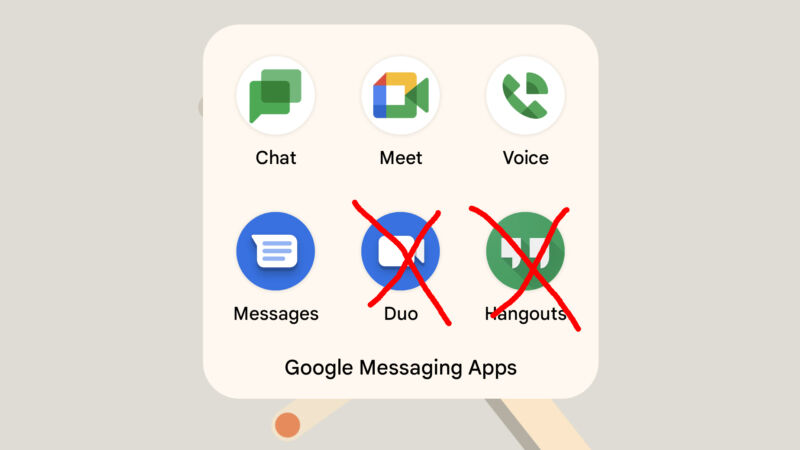
Rum Amadeo
Google is officially kicking off the merger of its two video chat apps, Google Meet and Google Duo. Google announced the merger in June, with the plan to keep the Google Meet brand name while merging the best of both code bases into the Google Duo app. According to Google’s PR email (no links, sorry), people will begin seeing Duo’s app and website branding swap over to Google Meet this week. Google’s various rebrandings are all on a rollout, so they’ll arrive at different times for different people, but Google says the complete rebrand should finish for everyone by September.
So Google Duo is being rebranded to Google Meet, and the existing Google Meet app is sticking around for a bit. That means there are now two apps called “Google Meet.” Google has a help article detailing this extremely confusing situation, calling the two Meet apps “Google Meet (original): The updated Meet app” and “Google Meet: The updated Duo app.” The “Google Meet (original)” app will someday be put out to pasture; it’s just sticking around while Google rebuilds the meeting functionality on top of Google Duo. Did everyone follow that?
The Meet and Duo video services were both built as reactions to Google’s far more stable communication competition. Google Meet was technically created in 2017 as a group business video chat application called “Google Hangouts Meet,” but it really became a major project after Zoom’s growth exploded in 2020 during the COVID-19 pandemic. Google Meet was still locked behind a paywall during the initial months of the work-from-home era, and while it eventually became as easy to use as Zoom, it was after Zoom became a household name.

Google’s two “Meet” apps. The left one is Duo. The right one is Meet.
Rum Amadeo
Google Duo came out in 2016 alongside the “companion app” Google Allo as a reaction to the growth of WhatsApp. Google and Facebook got into a $22 billion bidding war for WhatsApp two years earlier. Google lost and spent the next two years making a WhatsApp clone called Google Allo. Rather than integrate video chat into the app, Google split video functionality into a separate app called Google Duo. WhatsApp didn’t have video chat at the time, so you could use Google Duo video chat with Facebook’s WhatsApp or Google’s Allo, if you wanted.
Allo and Duo were originally focused on India, which led Duo to build a one-to-one video chat system that used little bandwidth and worked well on unstable connections. That efficient video chat system will be the basis for the new combined app, with Google building Meet’s meeting link functionality into Duo and rebranding it. The install base is probably also a factor here. As a default Android app, Google Duo has more than 5 billion downloads on the Play Store, while Meet only has 100 million. Google’s path makes for a smoother transition for those 5 billion installs, while the 100 million will have to switch manually. Google says that it will hide the old, original Google Meet app from app store searches in September. Eventually, it will need to implement a pop-up message for existing users of the old Google Meet app that tells them to upgrade.
This move is happening because Google “unified” its messaging teams in 2020, with a single person, Google Workspace VP and GM Javier Soltero, taking the reins of “all of Google’s collective communication products.” That should mean Google Hangouts, Google Meet, Google Chat, Google Messages, Google Duo, and Google Voice, and Google even threw in the Android phone app for good measure. It was announced last month that Soltero is leaving Google, though, so that’s only two years on the messaging unification job. Nobody knows who, if anyone, is taking over as the new “head of messaging.” Single’s plan is still happening, though—besides this Meet and Duo merger, Hangouts will finally shut down in a few months. This new, more cohesive lineup will leave one Google video app and three Google chat apps.
